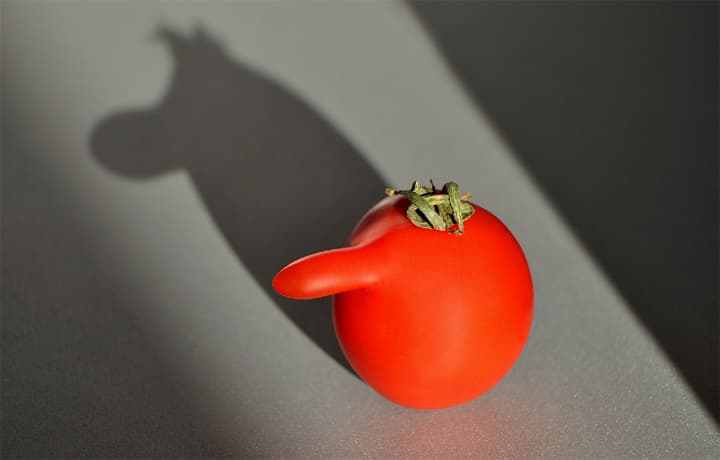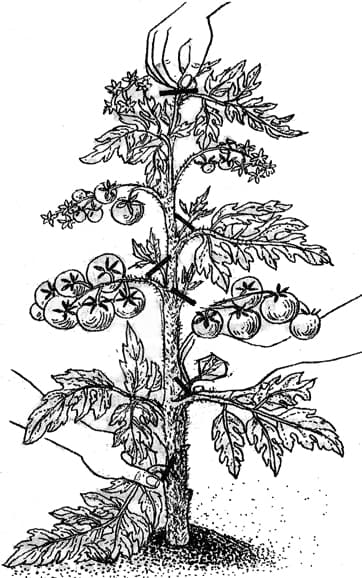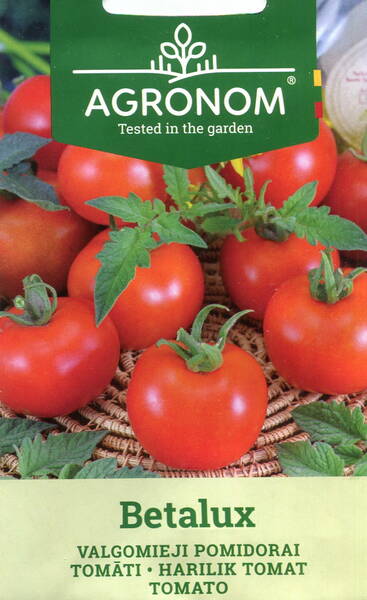Ex Tax: 1.05€
A very early, dwarf variety. First harvest arrives 95-100 days after germination.
The fruit is small, about 65-70 g weight. Grown outdoors. Grows best at +22 to +24 °C temperature.
1 g contains approximately 200-300 seeds.

Requirements of the culture: due to the high need for warmth and, above all, in order to protect the tomatoes from the rain, they are readily grown in greenhouses.
In places with adverse climatic conditions, they can only be grown in greenhouses. When growing outdoors in the garden, you need to find the warmest and sunniest place. It doesn't have to be a garden bed at all. The ideal place is a south-facing wall of the house, painted in light colours since the plant will be partially protected from precipitation by the overhang of the roof. Under glass, the sun is also required and shading from other tall plants is not allowed. Instead of a greenhouse, a greenhouse covered with a film can be used.
Tomatoes do well in the same greenhouse as cucumbers, although they have slightly different requirements. The greenhouse must be well-ventilated. Cucumbers, which generally prefer moist and warm environments, tolerate these conditions well. If the humidity is too high, tomatoes quickly fall prey to fungal diseases.
Sowing: sowing is done in trays with soil rich in nutrients. Germination temperature is +20+25 °C. You can also plant 3 seeds directly into the pot to allow the strongest seedling to grow. Under glass, sowing can be done as early as January. If there is a need for an additional late harvest, a couple more plants are grown in June. 4 weeks after sowing, seedlings can be transplanted from trays into separate pots.
Planting: Transplanting too early in open ground can lead to disruption of the growth process, so it is better to wait until the end of May. When transplanting from pot to pot and at the final planting on the garden bed, the plant should be planted in the ground deeper and deeper each time. In this case, it forms lateral roots and can consume additional water and nutrients. The area occupied by one plant in the garden is 60 x 60 cm, and for small tomatoes - a little less. Already before planting, a support pole at least 2 m high is dug into the ground. Spiral poles are especially practical since plants do not need to be tied to them. In the greenhouse, tomatoes grow up on ropes with nooses.
Fertilizing: Tomatoes need a lot of nutrients. It is recommended to introduce rotted or dried manure into the soil in late autumn. Dolomite flour also improves soil quality. Fertilizers are applied to the open ground immediately before planting and then 1-2 more times. More fruits grow under glass, so fertilizers must be applied 2-3 times.
Care: the elimination of stepchildren is one of the most important measures for the care of tomatoes. All stepchildren growing from the axils of the leaves should be removed immediately. In August, the ends of the shoots are cut off from tomatoes grown in the open ground so that the still-growing fruits ripen. It is best to remove only the seedlings that are still growing after this and leave the leaves.
All shoots growing between the axils of the leaves (stepchildren), as well as leaves lying on the ground, should be removed from the plant; from mid-August - also still growing seedlings
Subsequently, the seedlings will no longer ripen without that. Usually grow no more than 5-6 infructescences. In the greenhouse, 2-3 more seedlings can ripen - right up to the roof, after which the top is cut off. When flowers appear, the greenhouse must be well-ventilated, especially on sunny days, at noon. If this is not possible, gently shake the inflorescences to shake off the pollen.
Abundant watering is required. With the beginning of the appearance of fruits, the need for water increases even more. Sufficient soil moisture is a guarantee that the fruits will not burst. Leaves that are near the surface of the earth must be removed, as well as yellowing leaves - from the bottom up. Cut off healthy leaves and stepchildren are left lying on the ground as material for mulching.

* Previously, there was a misconception that tomatoes are harmful to human health due to their high salt content. It has now been reliably proven that the antioxidant lycopene contained in tomatoes prevents cardiovascular disorders - heart attack and stroke significantly reduces the risk of prostatitis and some forms of cancer of the oesophagus and stomach. Even the desired consumption rate has been determined: 900 g of fresh tomatoes, 1 glass of juice or 1 spoon of tomato ketchup per day per person.












